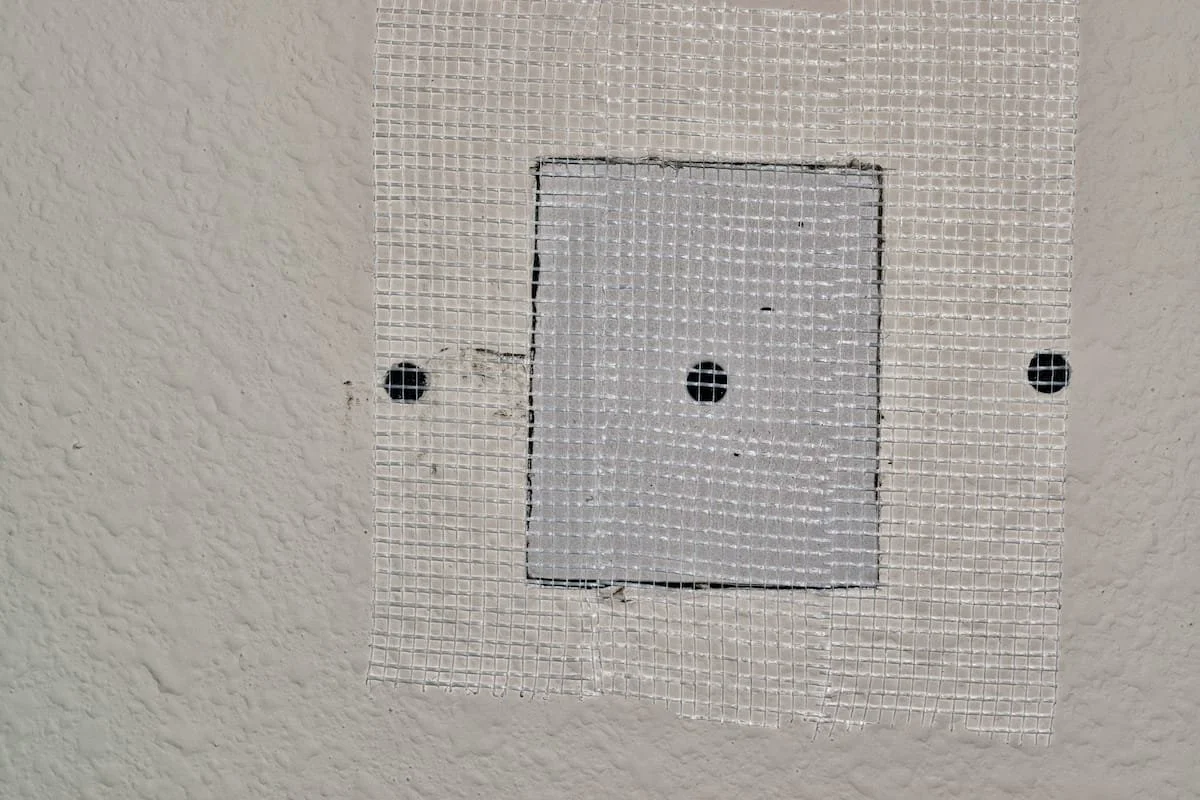How to Repair a Hole in Drywall
An easy DIYer's guide to a simple home fix.
Home repair projects of any size can be a daunting task. The good news is that even if you don't know how to repair a hole in drywall, you can figure it out pretty easily.
It's one of the easier and less stressful projects you can tackle, and it's probably something you'll need to do at some point during your lease.
Repairing a hole in drywall can be done quickly and cheaply, and when done correctly, the results will last long after you've made your next apartment your new home.
Find the right tools for the job
The first step is to head to your local hardware store. If you need to repair small holes from picture frames, for example, there will only be two things on your shopping list.
A tub of spackle
A joint knife
If this is your first time learning how to repair a small hole in drywall, good news. This is one home improvement task you can do on the cheap. Both items can be picked up for less than 20 bucks.
And speaking of options, you'll notice several similar looking products with different names, like spackle, wall putty and joint compound, which can add to your confusion. To fill small holes, you'll want to use spackle or spackling paste. This is best for holes made by thumbtacks or small nails used to hang pictures. Spackle will also be your best bet if you accidentally took a small chunk out of your wall when moving furniture.
How to fix small holes in drywall
Scrape away any jagged edges or loose drywall. Don't worry if you make the hole a little bigger. You're filling it anyway.
Scoop a little bit of spackle onto the edge of your joint knife and spread it across the hole. The gap you're filling will take only as much spackle as it needs, so be sure not to go overboard with it.
When it dries, you should be able to easily paint over it.
How to fix large holes in drywall
Your shopping list here will be a little bit longer but it's still manageable for first-time DIYers.
A tub of joint compound
A joint knife
A drywall patch in the correct size
A roll of drywall tape
A sandpaper sponge
Let's start with the difference between joint compound and spackle. When it dries, the joint compound will shrink down a little in the hole you're filling it with, whereas the spackle will retain its volume when applied. Joint compound will hold to paint and primer better when it comes time to paint over it, while spackle is intended to be applied in smaller amounts, so any imperfections will be too small to notice or can be painted over.
In short, a joint compound will be the better way to go when filling holes from when you mounted your TV to the wall. You can pick up the joint compound for around the same price as the spackle, between $4 to $7 for a small tub. You'll already have a joint knife. A pack of drywall patches and a sandpaper sponge will run around $4 each. You can also pick up a single kit that includes everything you'll need for the job for less than $10.
Step 1: Scraping
Again, start by gently scraping or chipping away any loose or flaking drywall from the edges of the hole, just as you did with the smaller nail holes from your photo frames.
Step 2: Patching
Place the patch over the hole and use the tape around the edges to hold it in place. You can use drywall tape, or even masking tape. Next, apply the joint compound with the joint knife. Make sure you go in a criss-cross pattern. Don't go up and down or side to side. Otherwise, it won't dry correctly and you'll be left with an uneven wavy dip in your wall.
When applying the joint compound, use less around the edges so it smooths out into the rest of the wall. Let it dry, and if necessary, apply another layer of compound. If you can still see the patch through the first layer, apply a second.
Step 3: Sanding and painting
Once the joint compound dries and cures, sand it down with a sand sponge or a sheet of fine-grit sandpaper. If your wall looks even and flat without any lumps, bumps or dips, it's time to paint.
You may even be able to save some more money on this step by asking your building's superintendent or maintenance staff if they have a spare bucket of paint you can use. Oftentimes, they'll repaint the apartment when tenants move out, so they'll already have the right color.
And if they don't have any paint, ask them for the brand and shade they used. There's nothing more annoying than buying paint that's a shade off and not realizing until after it's already on the wall.
Give a hand by repairing holes in your drywall
Take a step back and admire your work. If you did it correctly, you shouldn't notice any difference between where the holes were and the rest of the wall. When stored correctly, your leftover spackle or joint compound should last a couple of months in your toolbox. If you need to use it in your new place and it seems too firm when you try to apply it, toss it and pick up another tub.
Congratulations, you now know how to repair a hole in the drywall. Not so scary, was it? You'll know your way around the hardware store in no time.









